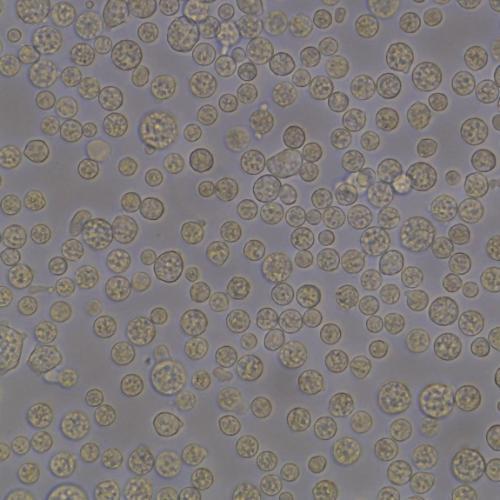VCU researchers pioneer rapid test for rare, often-fatal amoebic meningitis
 Identifying why a patient is suffering from meningitis must be fast – and a new test pioneered by a team at VCU’s Medical Laboratory Sciences promises a breakthrough in pinpointing when a brain-invading amoeba is the cause. Primary amoebic meningoencephalitis (PAM), an extremely rare but often-fatal infection, has been difficult for medical professionals to identify.
Identifying why a patient is suffering from meningitis must be fast – and a new test pioneered by a team at VCU’s Medical Laboratory Sciences promises a breakthrough in pinpointing when a brain-invading amoeba is the cause. Primary amoebic meningoencephalitis (PAM), an extremely rare but often-fatal infection, has been difficult for medical professionals to identify.
A research team that includes William Korzun, Ph.D., professor emeritus, and Stephen Friedrichs, M.S., a recent graduate student, has developed a laboratory test that uses a liquid chromatography-mass spectrometry (LC-MS) platform to identify molecular evidence of Naegleria fowleri in a patient’s cerebrospinal fluid.
Still in development and requiring federal regulatory approval, this test could potentially speed up diagnosis and life-saving treatment. There are only a handful of known PAM survivors in this country since the 1970s.
“This infection moves fast,” said Friedrichs, who now works in the VCU Health Microbiology Lab. “In many cases, patients are diagnosed postmortem, after it’s too late to intervene. Our goal is to change that.”
For now, their work is headed to publication in Laboratory Medicine, a journal aimed at expanding awareness and inviting further research collaboration.
 Naegleria fowleri thrives in warm freshwater, such as lakes, rivers, hot springs or even under-chlorinated pools. An individual risks infection only by forcibly inhaling contaminated water through the nose, allowing the amoeba to migrate to the brain.
Naegleria fowleri thrives in warm freshwater, such as lakes, rivers, hot springs or even under-chlorinated pools. An individual risks infection only by forcibly inhaling contaminated water through the nose, allowing the amoeba to migrate to the brain.
Initial symptoms of PAM resemble bacterial or viral meningitis, an inflammation of the membranes surrounding the brain and spinal cord, including headache, fever, nausea and a stiff neck that typically appear within 48 hours post exposure. As the amoeba destroys brain tissue and the body’s immune response intensifies, these symptoms might rapidly progress to seizures, often leaving the patient in a comatose state.
The mortality rate of PAM is reported to be greater than 96%, with a median time from symptom onset to death of five days. Starting anti-amoeba or anti-fungal medications as soon as possible is critical.
“Because it looks like other, more common forms of meningitis, doctors don’t often suspect PAM unless the patient’s recent exposure to warm freshwater is known,” Korzun said. “That delay in testing is often fatal.”
Fast, affordable and life-saving testing
The team’s test detects ergosterol, a molecule found in the cell membranes of fungi and amoebas, but not in bacteria or viruses. The presence of ergosterol in cerebrospinal fluid could serve as a red flag for the amoeba or other rare pathogens that don’t respond to antibiotics.
Using the LC-MS platform, the researchers demonstrated that ergosterol can be reliably detected in cerebrospinal fluid samples inoculated with N. fowleri at concentrations as low as 1ng/mL or 1,000 cells/mL – and not in cerebrospinal fluid collected from cases of bacterial or viral meningitis.
Korzun is credited with bringing mass spectrometry to the department, with VCU becoming the nation’s first program to teach students the theory behind the technique and how to use the technology. Mass spectrometry-liquid chromatography platforms are highly standardized, sensitive, and precise analytical instruments, and they are commonly found in research settings and in major hospital laboratories.
While a standard PCR test for N. fowleri is available through the Atlanta-based Centers for Disease Control, shipping delays can mean life-or-death consequences. By contrast, the VCU-developed method can return results in as little as three hours at significantly lower costs.
“Our hope is that this test can become a reflex option when typical meningitis tests come back negative,” Friedrichs said.
In turn, the test could offer a way to monitor treatment progress. “If we see ergosterol levels in cerebrospinal fluid decreasing, that could suggest that anti-amoeba drugs are working,” he said.
Korzun noted that full Federal Drug Administration approval might be a long shot, but it could join other tests available as “Research Use Only.” This group of tests meet designated laboratory certifications, such as early COVID-19 tests during the pandemic, but have not been fully vetted for patient diagnoses.
Looking Ahead
While PAM is exceedingly rare, its severity underscores the importance of awareness. “This amoeba isn’t something to panic over,” Friedrichs said. “But knowing it exists and taking precautions like using nose clips when swimming in warm freshwater can make a difference.”
The VCU research is funded in part by the Jordan Smelski Foundation for Amoeba Awareness, formed in tribute to an 11-year-old Florida boy who died in 2014. Smelski became infected with the amoeba causing PAM after swimming in hot springs during a family vacation in Costa Rica.